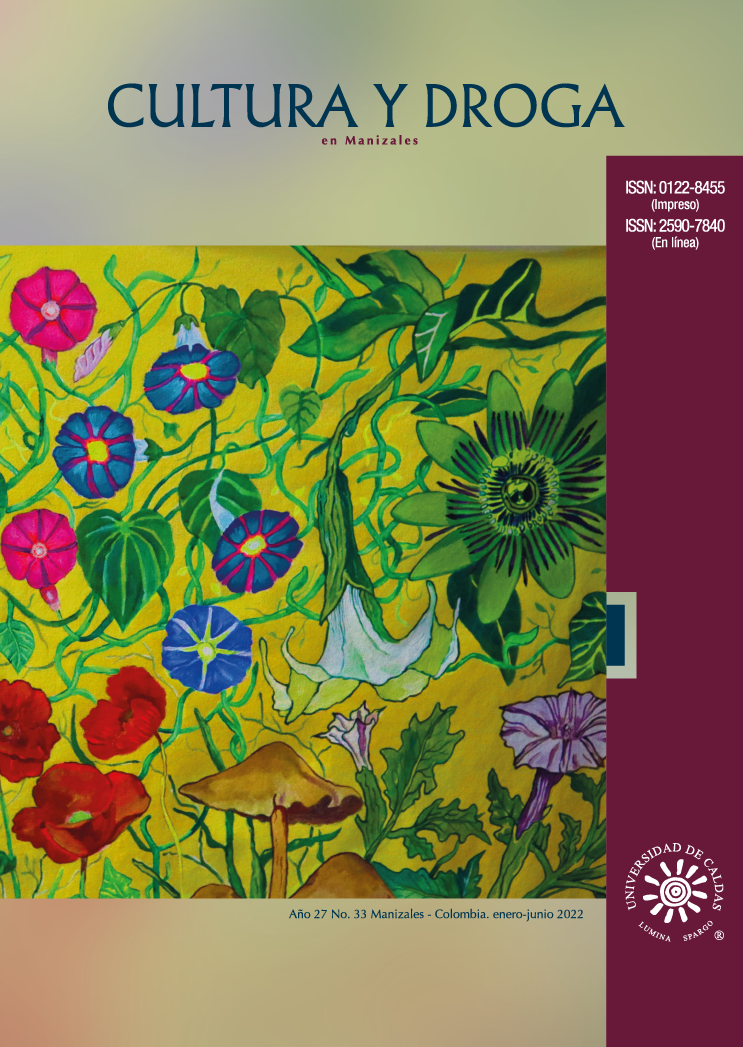Authors
Abstract
Objective: To analyze the effects of language on users of psychoactive substances and their practices from the discourses of actors who participate in the circuits of prescription, marketing and consumption. Method: Based on the results of three research projects, two of them on the use of benzodiazepines (2013-2016) and one on psychoactive substances (2016-2019), the assemblages and performativity of the language referring to these uses are analyzed. Results: The effects of language are observed in the consideration of the self of the consuming subjects from the dependence and dishabituation to the substance, the perception of cultural demands and the assumption of identities linked to the consumption. Conclusions: Reflection on the processes of inclusion/exclusion that certain forms of language performatively generate can provide the conditions for their deconstruction and show how certain
modes of thought have influenced the narcotization of everyday life.
References
Austin, J.L. (1962). Cómo hacer cosas con palabras. Palabras y acciones. Ediciones Paidós.
Barrenengoa, P. (2019). Consumos problemáticos juveniles, trayectorias y subjetividades [Tesis doctoral, Universidad Nacional de La Plata]. Repositorio institucional de la Universidad Nacional de La Plata. https://bit.ly/3I3DhfW
Bourke, J. (2014). Pain: metaphor, body, and culture in Anglo-American societies between the eighteenth and twentieth centuries. Rethinking History, 18(4), 475-498. DOI: 10.1080/13642529.2014.893660
Calisto, N. (2019). Efectos de sentido e identificaciones en usuari@s de sustancias psicoactivas [Tesis de maestría, Universidad de la República]. Repositorio
institucional de la Universidad de República. https://bit.ly/3J6vNdd
Deleuze, G. y Guattari, F. (2002). Mil Mesetas. Capitalismo y esquizofrenia. PreTextos.
Deleuze, G. (1969). Lógica del sentido (reimpresión, 2013). Paidós.
Eira, G. (2013). Los procesos de significación en las prácticas relacionadas con el consumo de pasta base. Cuentos de “Gárgolas” y “Latas”. Athenea Digital, 13(3),
23-37. 10.5565/rev/athenead/v13n3.891
Fernández, J. (2000). Los fármacos malditos. Nordan-Comunidad.
Foucault, M. (1969). La arqueología del saber. (2008). Siglo XXI editores.
Foucault, M. (2007). El nacimiento de la biopolítica. Curso en el Collége de France (1978-1979). Fondo de Cultura Económica.
Fox, N., y Ward, K. (2008). What are health identities and how may we study them? Sociology of Health & Illness, 30(7), 1007-1021. https://doi.org/10.1111/j.14679566.2008.01093.x
Hacking, I. (2006). Making Up People. London Review of Books, 28(16), 161-171.
Hacking, I. (2007). Kinds of People: Moving Targets. Proceedings of the British Academy, 151, 285-318. 10.5871/bacad/9780197264249.003.0010
Hernández-Sampieri, R., Fernández-Collado, C. y Baptista-Lucio, M. P. (2010). Metodología de la investigación. McGraw-Hill.
Junta Nacional de Drogas. (2018). VII Encuesta Nacional sobre consumo de drogas en población general. https://bit.ly/3F7BJAx
Ley 14.294. (1974). Estupefacientes. Se regula su comercialización y uso y se establecen medidas contra el comercio ilícito de las drogas.
https://legislativo.parlamento.gub.uy/temporales/leytemp9108114.htm
McLeod, K. (2014). The missing work of collaboration: Using assemblages to rethink antidepressant action. Contemporary Drug Problems 41(1), 109-142.
https://doi.org/10.1177/009145091404100106
Moncrieff, J. (2018). Un enfoque alternativo del tratamiento farmacológico en psiquiatría. Revista de la Asociación Española de Neuropsiquiatría, 38(133),
181-193. DOI: 10.4321/S0211-57352018000100010
ONU. (2016). UNGASS ámbito insustituible para debate franco y los consensos en políticas de droga. https://bit.ly/3GSSQqd
Real, M. (2014). Fisuras: La dimensión del (sin) sentido y el consumo de pasta base [Tesis de maestría, Universidad de la República]. Repositorio institucional de la
Universidad de la República. https://bit.ly/3e5t8T3
Rojas, S. (2017). La investigación sobre el uso de sustancias psicoactivas en la ciudad de Bogotá: entre 1985 y 2005. Drugs and Addictive Behavior, 2(1), 84-97.
DOI: 10.21501/24631779.2263
Saris, J. (2011). The Addicted Self and the Pharmaceutical Self: Ecologies of Will, Information, and Power in Junkies, Addicts, and Patients. En: J. H. Jenkins
(Ed.) Pharmaceutical Self: The Global Shaping of Experience in an Age of Psychopharmacology (pp. 209-229). School for Advanced Research Press.
Suárez, H., Rossal, M., Ramírez, J., Albano, G., Castelli, L. y Martínez, E. (2012). Fisuras: Dos estudios sobre pasta base de cocaína en el Uruguay. Aproximaciones
cuantitativas y etnográficas. Facultad de Humanidades y Ciencias de la Educación, UDELAR.

 PDF (Español)
PDF (Español)
 FLIP
FLIP






















